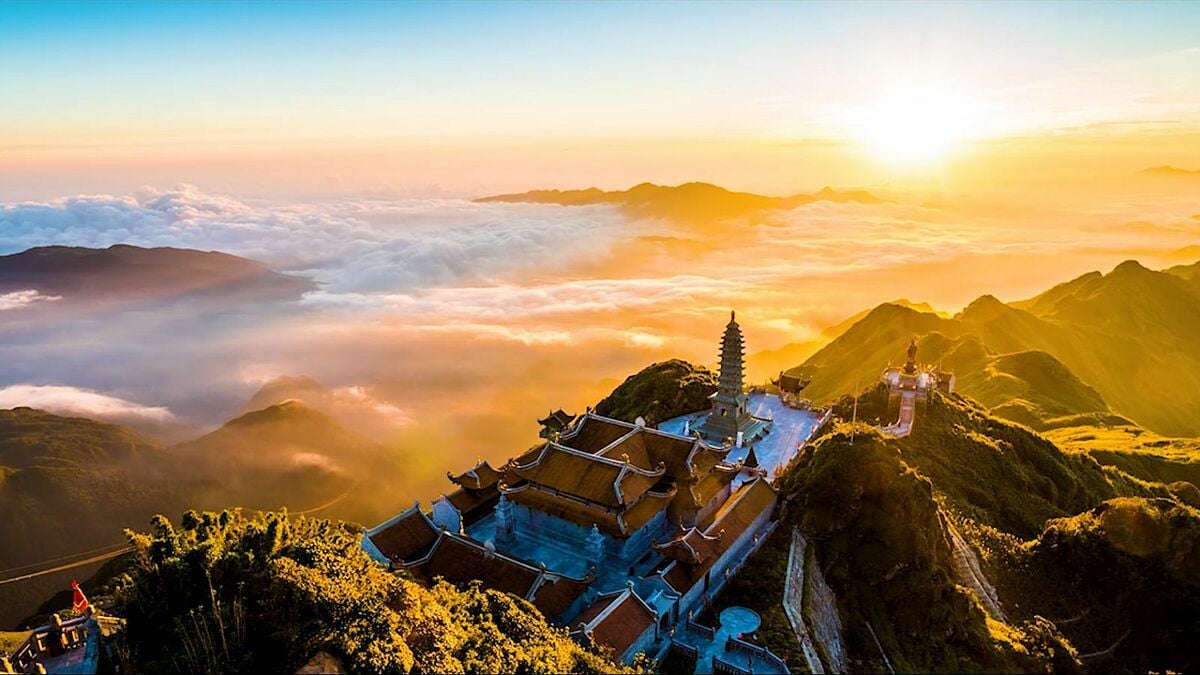Vietnam is the second largest coffee producer in the world. Second to rice, coffee is Vietnam's largest exported commodity and accounts for over 18% of global coffee exports. Coffee was first introduced to Vietnam in 1857 by the French, influencing Vietnamese coffee to be made typically as a dark or French roast.
 Fansipan is located in Sapa, an area famous for its layered rice
terraces and colourful indigenous groups.In 2016, a 6292-metre cable
car was built to take tourists to the top of the mountain. Prior to
this, the only way to reach the top was via a multi-day trek, which
easily ranks as one of Southeast Asia's best treks!
Fansipan is located in Sapa, an area famous for its layered rice
terraces and colourful indigenous groups.In 2016, a 6292-metre cable
car was built to take tourists to the top of the mountain. Prior to
this, the only way to reach the top was via a multi-day trek, which
easily ranks as one of Southeast Asia's best treks!
 Stretching over three miles, Hang Son Doong is a natural marvel. It’s
wide enough to fly a Boeing 747 through and many of the cave’s
chambers are large enough to house an entire block of New York City
skyscrapers! Trees, plants and wildlife fell into the hole and have
made the cave their home. Today these trees reach over 30 metres high
and create an ecosystem unique to Hang Son Doong.
Stretching over three miles, Hang Son Doong is a natural marvel. It’s
wide enough to fly a Boeing 747 through and many of the cave’s
chambers are large enough to house an entire block of New York City
skyscrapers! Trees, plants and wildlife fell into the hole and have
made the cave their home. Today these trees reach over 30 metres high
and create an ecosystem unique to Hang Son Doong.
Reportedly 40% of Vietnamese folk have the surname Nguyen
:max_bytes(150000):strip_icc():format(webp)/roasted-pork-banh-mi-vietnamese-sandwitch-ddmfs-3X4-0332-cfb4d2e149e7476ab2a2b4030c543f1b.jpg) When it comes to Southeast Asian street food, you might be used to
spicy noodle dishes, fried insects and questionable meat skewers but
in Vietnam, the Banh Mi sandwich rules the roost. This baguette filled
with meat, cheese, pickles and seasonal veg is a Vietnamese staple and
one that has been filling the bellies of backpackers and locals for
generations.
When it comes to Southeast Asian street food, you might be used to
spicy noodle dishes, fried insects and questionable meat skewers but
in Vietnam, the Banh Mi sandwich rules the roost. This baguette filled
with meat, cheese, pickles and seasonal veg is a Vietnamese staple and
one that has been filling the bellies of backpackers and locals for
generations.
 Ban Gioc Waterfall is Vietnam’s widest waterfall and one of the least
visited natural wonders in the country. It is fed by the Quay Son
River which marks the border between Vietnam and China. The falls have
several terraces and stand over thirty metres tall.
Ban Gioc Waterfall is Vietnam’s widest waterfall and one of the least
visited natural wonders in the country. It is fed by the Quay Son
River which marks the border between Vietnam and China. The falls have
several terraces and stand over thirty metres tall.